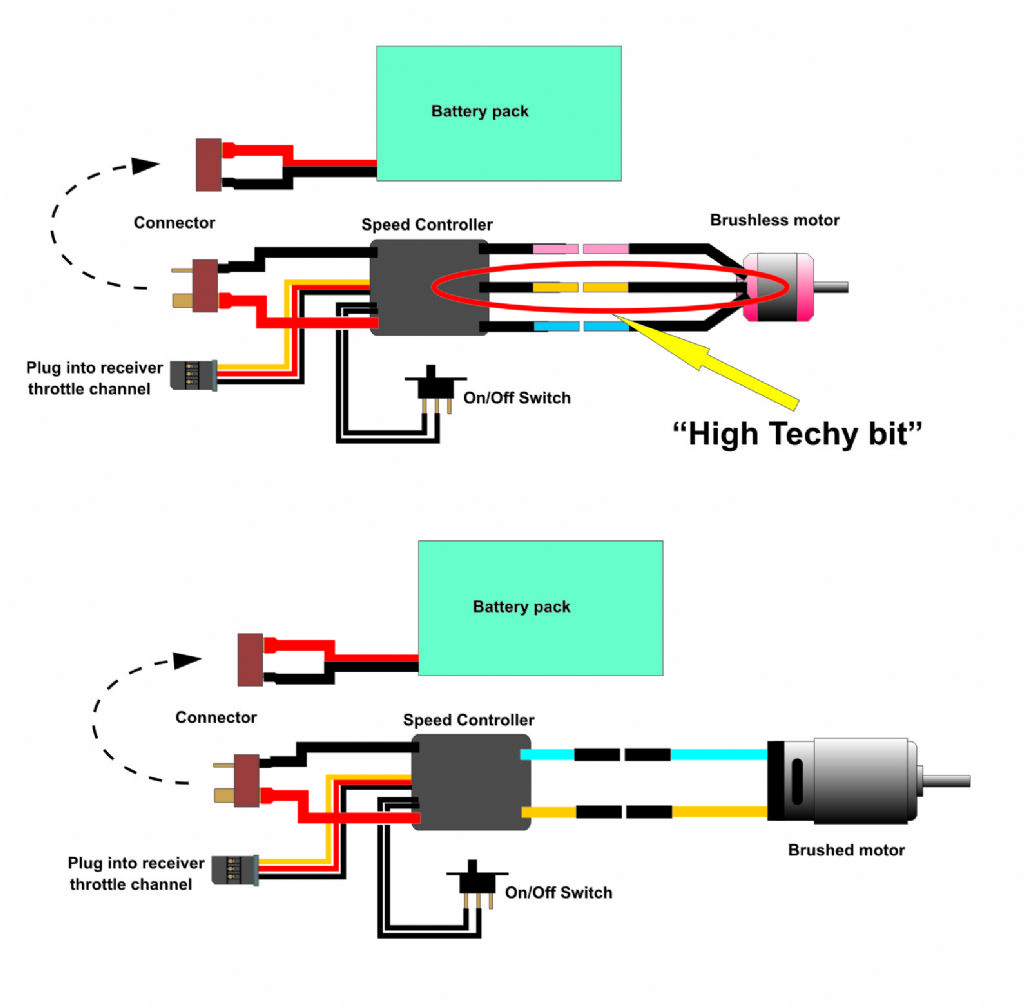Martin
More information is available about any given brushless motor that practically any brushed one (now that boxed Graupner motors are all but extinct). For example, I'm curious as to what you might mean by "a decent 540". I have several 540 3-pole motors in my box. One of them wouldn't pull the skin off a rice-pudding on anything less than 24 volts while another would just about pull off an arm on 6v. You couldn't tell one from the other without a really good look at it – there's certainly no indication on the case. Contrast that with an typical outrunner – see the picture here **LINK**
For what it's worth I don't think any motor with a 540-sized can would be sufficient power for a model 1metre long, especially one which has been built primarily for display and will likely be quite heavy. Conversely a moderate kv 35mm dia brushless running on 7.2v would turn a 45mm 3 or 4-blade prop without overpowering the thing. Just because there are a few sad individuals who think a Perkasa has to travel at warp speed doesn't mean that no other brushless option is possible.
LiPo batteries etc are not "inevitable". You don't need LiPo batteries to run brushless motors and equally you can use them to run brushed motors. The myth that they are the only power source suitable has come from aeromodelling, where their much superior power-weight ratio to NiMH makes them the only sensible choice. A modern automatic charger will handle both NiMH and LiPo types for a reasonable price – you don't need to spend hundreds e.g. **LINK**
Like you, I used to think that LiPo batteries were inherently dangerous and brushless motors were creations of the devil. Unlike you, I did some proper research; took advice and bought a proven motor/ESC/LiPo set-up; tried it and fine-tuned it until I was 100% happy with it. I still have a box full of brushed motors and the parts to make many more brushed ESCs than I will ever use, but brushless is now my first choice for anything which needs to plane over the water rather than plough though it.
As my tongue-in-cheek diagram was intended to show, the only real complication in installing them is connecting one additional wire – hardly beyond the grasp of any intelligent modeller. Otherwise they are smaller, lighter, hardly any more expensive and much more efficient. You should try one, Martin. It will certainly inform your opinions and may even change them! 
Oh! Almost forgot – I would have answered Alexander's original post but I haven't converted such a model to RC and I don't know of any blog or guide about doing so. Nil replies aren't much help.
Dave M
Edited By Dave Milbourn on 16/06/2016 11:19:05
Edited By Dave Milbourn on 16/06/2016 11:24:00






